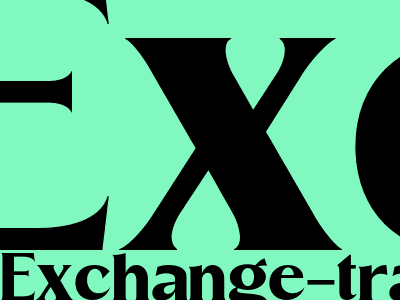
What Is an Exchange-Traded Fund (ETF)?
Investment Options 101: ETFs
Exchange-traded funds (ETFs) are a type of investment fund traded on stock exchanges, just like stocks. In fact, ETFs are similar to mutual funds in that they pool money from many investors and invest it in a diverse portfolio of underlying assets, such as stocks, bonds, or commodities. However, unlike mutual funds which can only be traded once per day, ETFs can be traded throughout the day like stocks.
ETFs vs Mutual Funds
One of the key differences between ETFs and mutual funds is flexibility. ETFs are publicly traded, which means they can be bought and sold throughout the trading day, while mutual funds can only be traded at the end of each trading day. This flexibility allows ETF investors to take advantage of short-term market fluctuations and potentially maximize returns.
Another difference between ETFs and mutual funds is expense ratios. ETFs typically have lower expense ratios than mutual funds, which means that more of your investment is invested in the underlying assets and less is going to fees.
Types of ETFs
There are many different types of ETFs, each with its own unique investment focus. Some of the most common types of ETFs include:
- Broad market ETFs: These ETFs track the performance of a broad market index, such as the S&P 500 or the Nasdaq 100.
- Sector ETFs: These ETFs track the performance of a specific sector of the economy, such as technology or healthcare.
- Industry ETFs: These ETFs track the performance of a specific industry, such as biotechnology or semiconductors.
- Commodity ETFs: These ETFs track the performance of a specific commodity, such as gold or oil.
- Fixed income ETFs: These ETFs track the performance of a fixed income security, such as bonds.
- Inverse ETFs: These ETFs track the inverse of a specific index or asset, which means that they move in the opposite direction of the underlying asset.
ETFs are a versatile investment tool that can be used to achieve a variety of investment goals. They offer investors the flexibility to customize their portfolios, take advantage of short-term market fluctuations, and potentially maximize returns.
Benefits of ETFs
- Diversification: ETFs provide investors with instant diversification, which means that your investment is not tied to the performance of a single stock or bond.
- Flexibility: ETFs can be traded throughout the trading day, which gives investors the flexibility to take advantage of short-term market fluctuations.
- Low costs: ETFs typically have lower expense ratios than mutual funds, which means that more of your investment is invested in the underlying assets and less is going to fees.
- Transparency: ETFs are transparent, which means that investors have easy access to information about the underlying assets and the fund's performance.
Risks of ETFs
- Market risk: The value of ETFs can fluctuate with the market, which means that investors could lose money.
- Tracking error: ETFs are designed to track the performance of a specific index or asset, but there may be times when the ETF does not perfectly track the underlying asset.
- Liquidity risk: ETFs are traded on the stock exchange, but there may be times when there is not enough demand for a particular ETF, which could make it difficult to sell.
ETFs are a valuable investment tool that can be used to achieve a variety of investment goals. However, it is important to understand the risks involved before investing in ETFs.